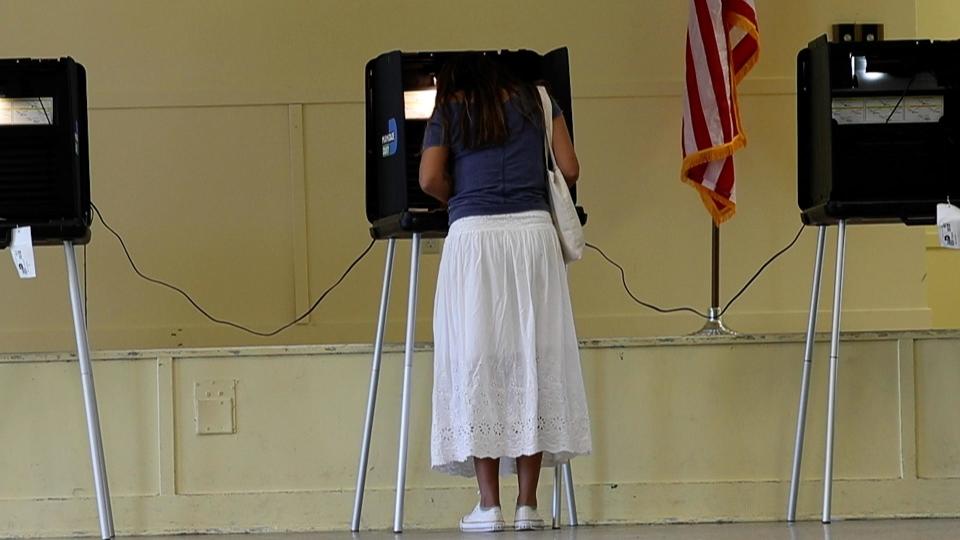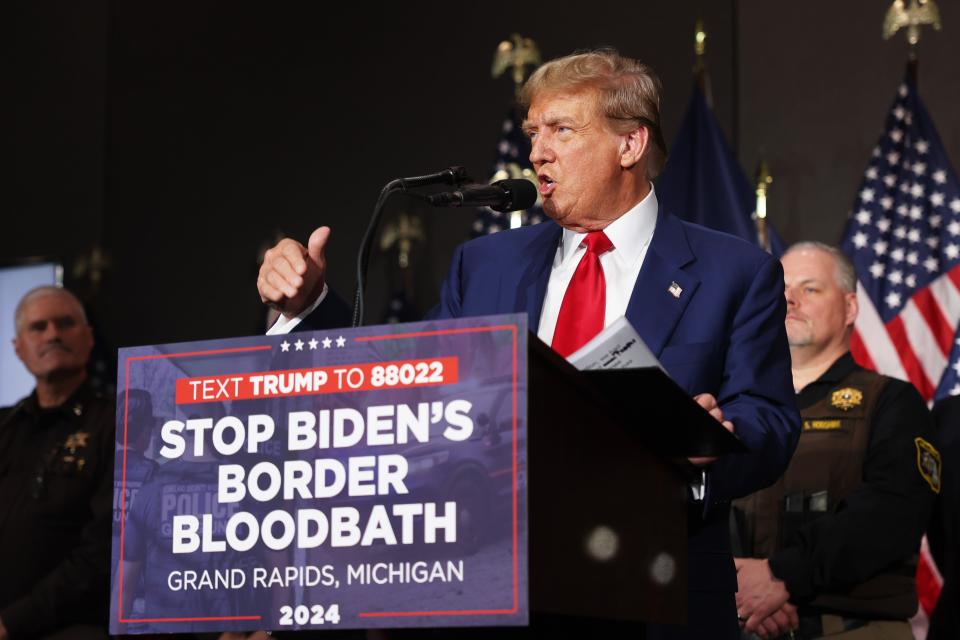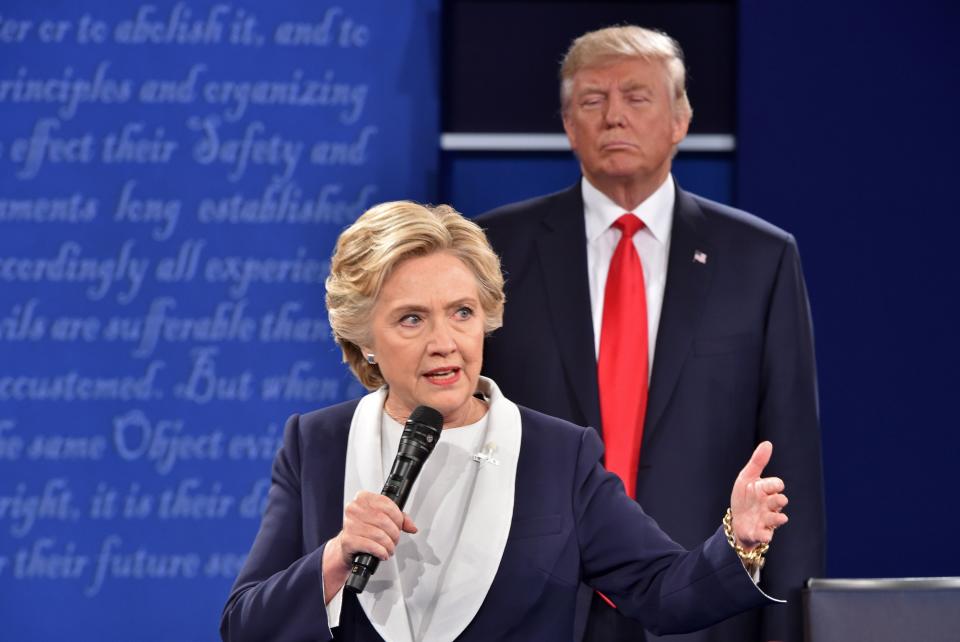Can you trust 2024 election polls on Donald Trump and Joe Biden? Here's how to cut through the noise.
- Oops!Something went wrong.Please try again later.
- Oops!Something went wrong.Please try again later.
- Oops!Something went wrong.Please try again later.
Love them or hate them, political polls aren’t going anywhere. As the 2024 presidential election kicks into high gear, the internet will be flooded with surveys tracking the horserace between President Joe Biden and former President Donald Trump.
Keeping track of the numbers can be daunting: Who's ahead in national polls? Who's ahead in state-level surveys? Figuring out which numbers to pay attention to – and whether any of it actually matters – can be even more challenging.
Luckily, the USA TODAY Network has got you covered. Here’s a refresher on why polls matter, whether you can trust them and what to look out for this year.
What do polls tell us about the election?
Think of polls as quick snapshots rather than crystal ball readings.
They don’t necessarily predict the results of an election. Rather, they’re used to gauge how people feel about a race during a specific period. Pollsters may ask questions about the future, but surveys have more to say about the voters' current temperature.
Polls also tend to have a short shelf life. Public opinion can shift quickly, meaning that the results of polls are often only a reliable measure of the state of a race during the time they were taken.

A survey taken two months ago won’t reflect the state of a race today, and a poll fielded tomorrow won’t tell us who is going to win the presidential election in November.
However, that doesn't mean polls captured at the beginning of a campaign cycle don't matter. The insights from early polls tease out the major issues voters are thinking about that could shape the race. They also help trace the trendlines of how a candidate is performing – whether they’re gaining traction, stagnating or losing support.
Pollster John Zogby likened the importance of looking at early polling to checking benchmarks while trying to reach an exercise goal.
“Am I going to get on the scale the day before to see how I did?” said Zogby. “No, I get on the scale every so often to say what am I doing? How am I doing? What am I doing right?”
Conducting polls early in a race and often throughout the course of an election allows political scientists, journalists and the public to track trends and spot major inflection points in campaigns.
Beware of two-candidate polls
Not all polls are built the same. The way a survey is designed, from how questions are worded to the demographics of the participants chosen, can influence the accuracy of its results.
David Paleologos, director of the Suffolk University Political Research Center, said political polls are most accurate when they replicate as closely as possible the questions and options voters will see on their ballot.

For instance, he said that polls on the 2024 presidential election should include choices beyond the two major party candidates – Trump and Biden – because most ballots will contain third-party and independent candidates who will garner some support.
“If the polls only show a binary choice, between Trump or Biden, you're not getting the full picture,” Paleologos said.
He pointed to close margins in critical swing states, including Wisconsin, Arizona and Georgia, during the 2020 election as an example. Trump lost in those states by fewer votes than Libertarian Party candidate Jo Jorgensen received.
If Jorgensen had not been in the race, the results in those battlegrounds, and possibly the outcome of the election nationally, could have looked markedly different, Paleologos said.
The Libertarian Party hasn’t yet chosen its candidate for the 2024 election. But early polls that include the party and other independent candidates as options are likely to more accurately show how disaffected voters are looking at their options, he explained.
Suffolk University and USA TODAY have a partnership collecting polling data and insights.
Who's being polled?
Another factor that can impact a poll’s accuracy is the sample population surveyed. Polls randomly select a small sample of people designed to represent the broader views and attitudes of a larger population. But every organization uses different methodologies to create their samples.
For instance, some election polls take the temperature of the general population, while others only include active voters or likely voters. They also may weigh demographic information, such as the ratio of Democrats to Republicans, differently.
In the 2024 race, Zogby, author of the forthcoming book "Beyond the Horse Race: How to Read Polls and Why We Should," suggested that the most accurate polls include only likely voters, the pool of people already planning to cast a ballot in November.
“A likely voter today may not be a likely voter on October 31,” Zogby said, but capturing these voters allows political scientists to better understand the Americans who will choose the next president.
Should I pay attention to national polls or state surveys?
Pollsters were lambasted in 2016 for projecting that then-Democratic nominee Hillary Clinton would win the election over Trump.
But national polls, which are supposed to reflect the popular vote across all states, were technically right. Overall, Clinton won nearly 2.9 million more votes than Trump.

So, what went wrong? Many analysts overstated Clinton’s lead in national polls, and few organizations conducted state-specific polls in former Democratic strongholds, such as Wisconsin, Michigan and Pennsylvania, that Trump was able to capture. His wins in those states ultimately landed him the electoral college victory.
That’s not to say that national polls are inferior to state polls, but you should think of them differently.
“National polls are more valuable to understand what the issues are impacting likely voters,” Paleologos said, while state polls better represent the horserace.
He and other polling experts told USA TODAY that Biden needs to lead Trump by three to four percentage points in a national poll to be tied with the Republican in the electoral college. That's because large liberal-leaning states like California and New York tend to tilt the results of national polls in Democrats’ favor, whereas the "electoral college these days skews Republican," Zogby said.
In other words, a national poll showing Biden and Trump tied would tell a similar story to a swing state poll that shows Trump leading Biden by a few points. But generally, experts warn against comparing national and state surveys, which are built off of different methodologies, against one another.
Can you trust the polls?
Mostly. Because polls are analyzing a myriad of shifting factors, they'll always have some level of uncertainty baked in, regardless of the specific election. Organizations also don’t collaborate on what states they plan to poll, or when, which means there’s always potential for blind spots, like in 2016.
Some political observers rely on poll averages, such as a tally from Real Clear Politics. These are generally reliable, but they can miss trends.
But when interpreted properly, polls often provide an accurate portrait of the state of an election.
“There are folks that will say, ‘Oh, you missed the election by two points,’” Zogby said. "Well, two points – that showed the ballpark of what was going to happen.”
And the more polls there are, the easier it is to evaluate the race.
This article originally appeared on USA TODAY: Donald Trump vs. Joe Biden: What to know about 2024 election polls

